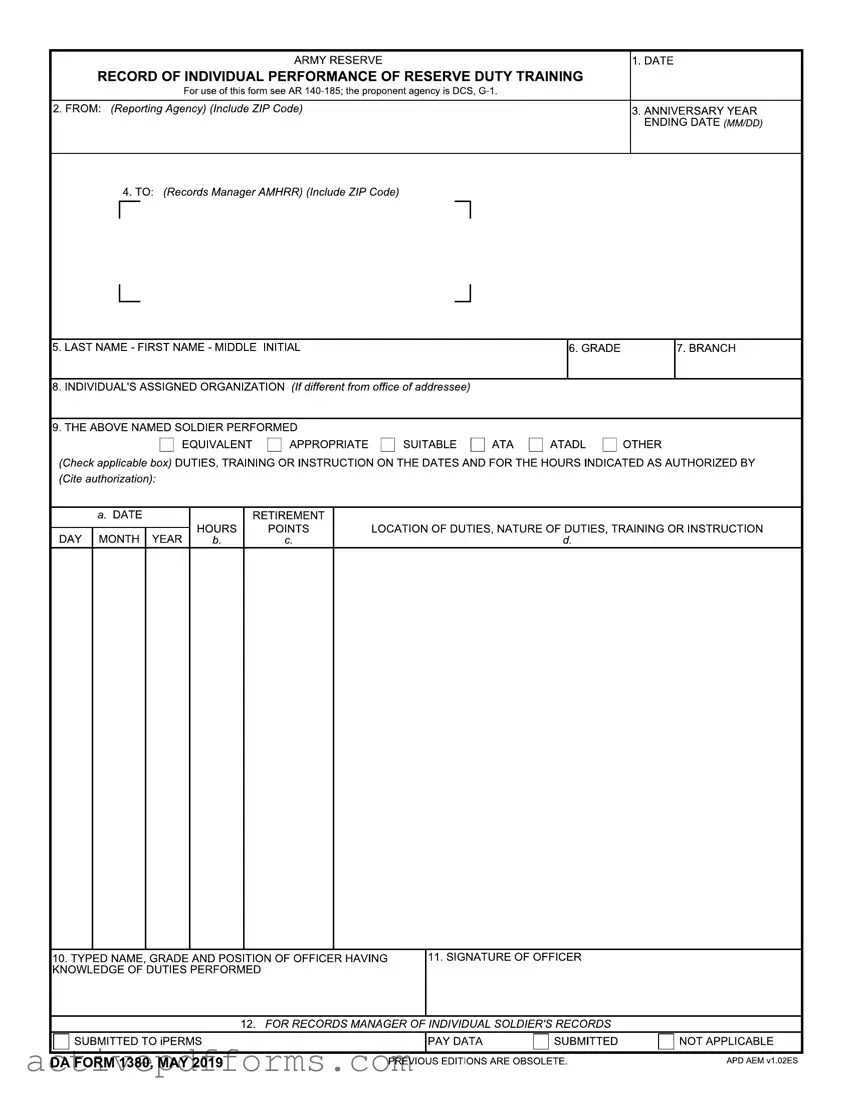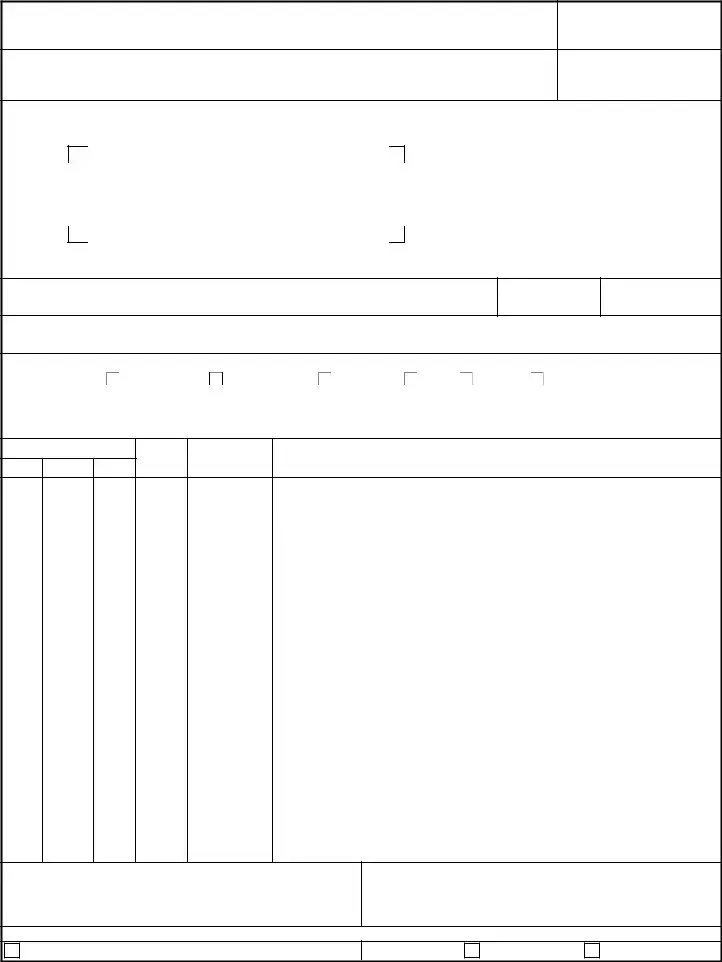The DA Form 1380 serves as a critical tool for members of the Army Reserve, documenting individual performance during reserve duty training exercises and events that are not part of the traditional Inactive Duty Training (IDT) assemblies. This comprehensive form, mandated by AR 140-185 and overseen by the DCS, G-1 as the proponent agency, captures essential details such as the date of training, the reporting agency, the anniversary year ending date, and personal information about the soldier involved. It even extends to record specific duties, training, or instruction carried out, further categorizing these activities into whether they were appropriate, suitable, ATTADL, or other assignments based on the authorization cited. Soldiers are required to meticulously fill out each portion, including the dates and hours engaged in the duty, retirement points accrued, and the specific nature and location of their duties. The form also necessitates the signature of an officer with firsthand knowledge of the duties performed, ensuring authenticity and accountability. Moreover, DA Form 1380 not only facilitates the recording process for attendance at professional or trade convention meetings and training projects approved by the Army Human Resources Command (AHRC) but also is crucial for the submission of pay data and retirement points—whether these are to be submitted for payment or recorded as non-paid activities. Ultimately, this document provides a structured framework for acknowledging the commitment and effort of Army Reserve members outside of regular IDT, ensuring their contributions are officially recognized and appropriately rewarded.


